THE H-MAN (1958) • BATTLE IN OUTER SPACE (1959)
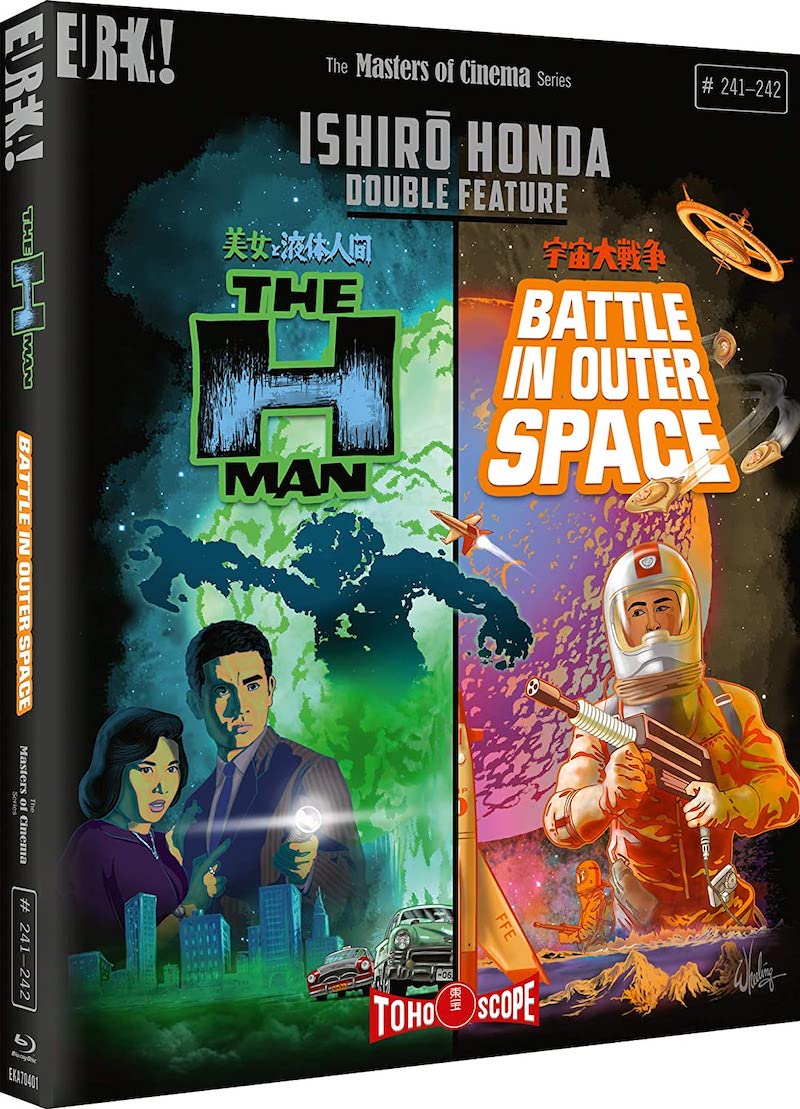

Eureka Entertainment’s ‘Masters of Cinema’ Series is proud to present two classics of Japanese sci-fi cinema, both directed by the great Ishirō Honda, for the first time ever on home video in the UK...
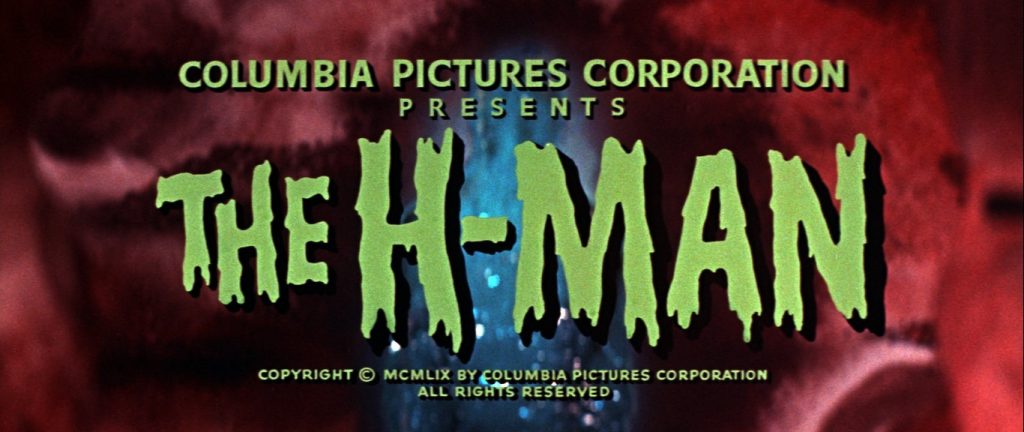

In Tokyo, a mysterious radioactive liquid is dissolving people into slimy, sentient, seemingly indestructible blobs of destruction!
Christmas came early for fans of imaginative Japanese movies! Just weeks after the Blu-ray release of Mothra (1961) Eureka Entertainment adds not one but another two classics to their ‘Masters of Cinema’ imprint. Both are marvellous movies, again from director Ishirō Honda, and the special effects by collaborator Eiji Tsuburaya are worthy of being called ‘seminal’. The H-Man is a horror thriller with a light touch fuelled by nuclear paranoia, while Battle in Outer Space is a great science-fiction adventure that’s fun for the whole family…
There’s no doubt about the central theme of The H-Man. The first thing we see is a nuclear mushroom cloud blossoming in ruddy turmoil across the screen. Just 12 years earlier, hundreds of thousands of Japanese civilians had been killed by two nuclear bombs over Hiroshima and Nagasaki. People were still ill and dying because of the lingering, invisible aftermath. The events were seared into the Japanese mass consciousness.
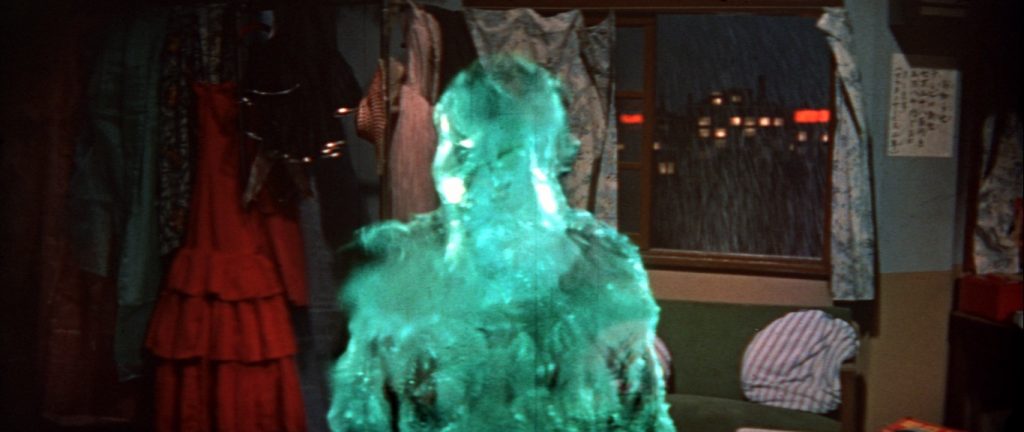
It was unforgettable, but soon after, in 1946, the US delivered a painful reminder when they tested the first hydrogen bomb on one of the Marshall Islands—a remote archipelago roughly equidistant from Japan, the Philippines, and Papua New Guinea. The new H-Bomb was even more devastating than expected. The island it exploded on was split in two—and that’s why a new fashion in two-piece swimsuits was nicknamed after Bikini Atoll. The US would detonate another 67 nuclear blasts there between 1946 and 1958, and the area remains one of the most radioactive in the world today.
In 1954, a Japanese fishing boat was caught in the cloud of radioactive fall-out from such a test and all the crew were severely affected, one dying soon after. The fish they brought to port was heavily contaminated. Radioactive rain fell on mainland Japan… The fishing boat witnessing the blast at the beginning of Godzilla (1954) is an overt reference to these events, and if you’re watching the Japanese cut of The H-Man, then the abandoned boat drifting behind the titles would certainly have similar connotations, which is why it’s not in the English-language version distributed by Columbia in the US…
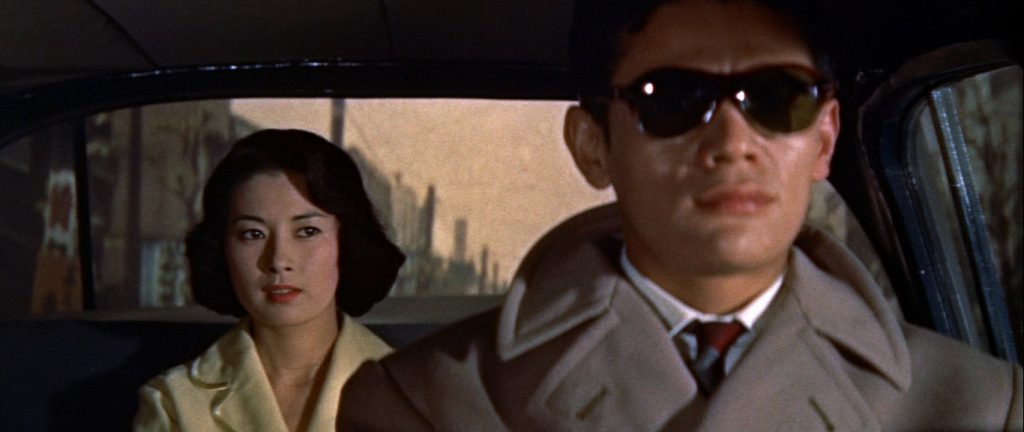
With an opener like that, one would never expect The H-Man to be so hugely enjoyable! But bear in mind that Ishirô Honda also wrote and directed Godzilla, another fun way to reassess Japan’s nuclear nightmare that established the monster movie franchise for Toho Studios. At the time, no one knew that the kaiju genre would have the longevity it did, so Toho were casting round in other genres.
The H-Man does, sort of, follow a similar kaiju formula. There’s even some city-scale devastation in a spectacular sequence, courtesy of SFX director Eiji Tsuburaya, that evokes a nuclear firestorm. But for the most part, in place of a giant creature stomping over miniature cityscapes, we have Tokyo threatened by an unseen menace in the form of mutant ooze!
The original Japanese title translates as Beauty and the Liquid People. It may well have part-inspired The Blob (1958), released later the same year, and would go on to influence many variations, perhaps most notoriously The Incredible Melting Man (1977).
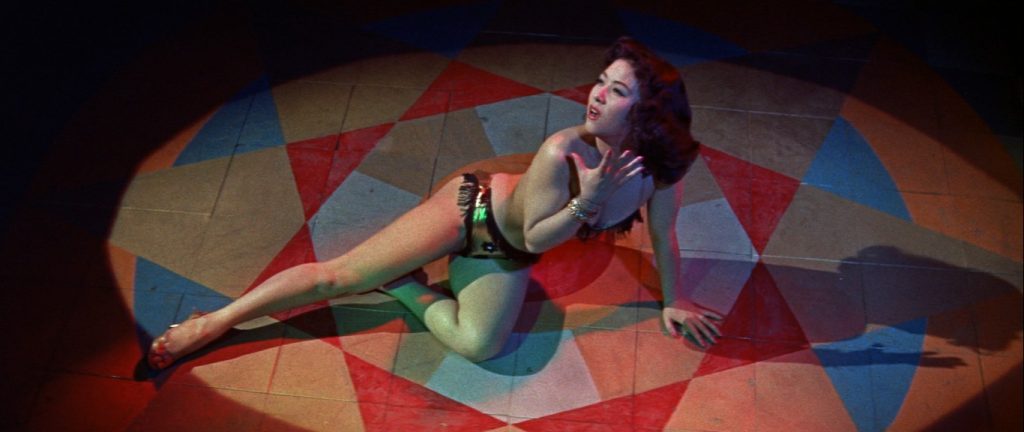
Something mysterious occurs when a drug deal on a rainy night in Tokyo goes wrong in a really weird way. In a scene that reminded me of the opener of Alex Cox’s Repo Man (1984), a gangster called Misaki (Hisaya Itô) is stowing a bag in the boot of a rather classy car when he goes a little crazy and shoots at the ground. The gunfire draws the attention of the police and the car, driven by Uchida (Makoto Satô) makes a swift departure.
But when the police arrive at the scene, all they find is Misaki’s dropped pistol lying next to his empty shoes and sodden suit. They deduce that he stripped and ran away naked! How likely is that? Surely a more plausible explanation is that he somehow dissolved in the rain and was washed away down the drain?
When Inspector Tominaga (Akihiko Hirata) questions Misaki’s girlfriend, Chikako (Yumi Shirakawa), a nightclub singer, there’s instant attraction between them. Tominaga can’t believe that Misaki would stay away from her for too long, so he decides to have her watched. Another one of Misaki’s gang visits her in the night to warn her off from talking to the police.
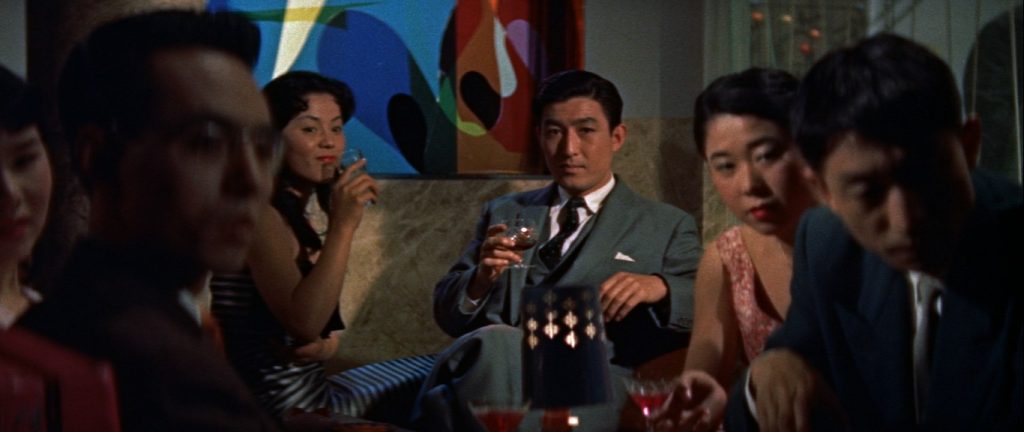
Things get curiouser when the heavy attempts a quick get away from her apartment window, shoots at something unseen in the alley and promptly disappears, leaving only his clothes behind. What’s more, Chikako swears there was another figure in her room, a shadow that left no footprints.
The H-Man is a fantastic fusion of mystery, gangster thriller, and ghost story that still feels remarkably fresh. Its period setting only helps–sharp suits, classy cars, fine frocks and bikini-clad burlesque dancers cavorting to frenetic jazz. Remember, bikinis had not long been invented! It’s not a far cry from the kind of noir thriller that might’ve starred Victor Mature… except it’s beautifully shot by Honda’s favoured cinematographer, Hajime Koizumi, with a sometimes subtle, often luridly lovely colour palette. Oh, and there are liquid mutants lurking in the rain and down the drains!
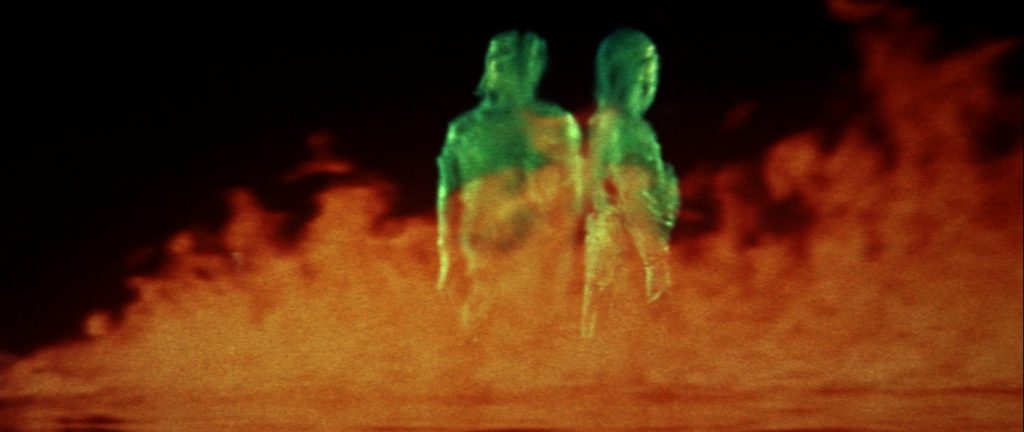
Young research scientist Dr Masada (Kenji Sahara), an old friend of Tominaga, turns up at police HQ, with a theory connecting the disappearing gangsters with ghost ships abandoned at sea, their decks strewn with the clothing of the missing crews. He takes the team to a hospital to hear the stories of some fisherman being treated for radiation sickness. The spooky flashback sequence is a stand-out set piece and the luminous green ghosts forming out of the rain is a beautifully haunting image.
It turns out that the boats had been affected by fall-out from nuclear tests at sea. Masada has the theory that an unknown effect of radiation had broken down the bodies of the crew into cellular components. Instead of killing them outright, the men had become some form of new organism that may, or may not, retain some of their human memories and impulses. These H-men can dissolve in water and partly reform elsewhere. What’s more, the effect can be passed-on. The touch of an H-Man renders its victim into the same liquid state. An early precursor of the contagious, rather than supernatural, zombie trope!
JAPAN | 1958 | 86 MINUTES | 2.35:1 | COLOUR | JAPANESE
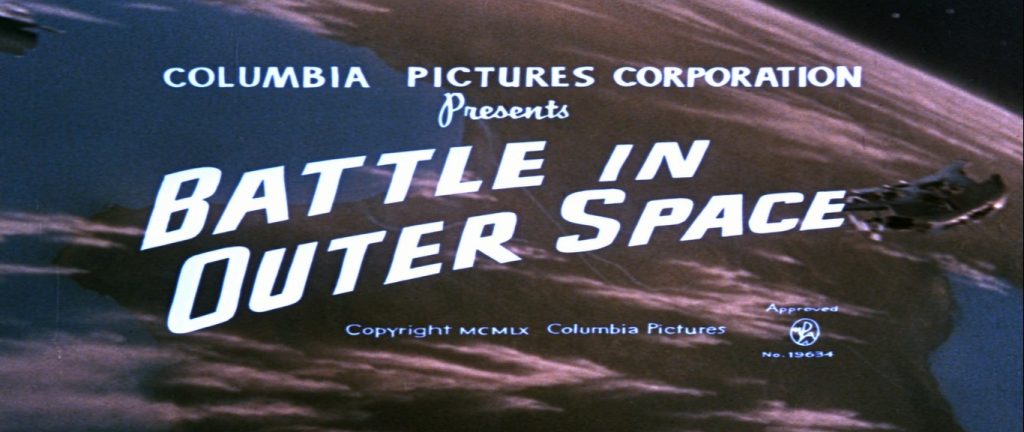

A series of mysterious catastrophes sweep the globe, causing the world’s scientists to conclude that beings from another planet are attacking Earth, and the world must unite to defend itself in a gigantic battle in outer space!
When Ishiro Honda directed The H-Man, he’d been making films for nearly 25 years. His output was incredibly varied (documentaries, war propaganda, comedies, romantic dramas, musicals), and he’d only directed a handful of films with any science-fiction elements. It just turned out that he had the Midas Touch when it came to genre.
On the back of The H-Man’s success at home and abroad, Toho found the confidence for an ambitious ‘space opera’ with the biggest budget and longest production schedule yet. Partly in response to US science-fiction classic like George Pal’s War of the Worlds (1953) and This Island Earth (1955), they drew their plans for the colourful epic Battle in Outer Space…
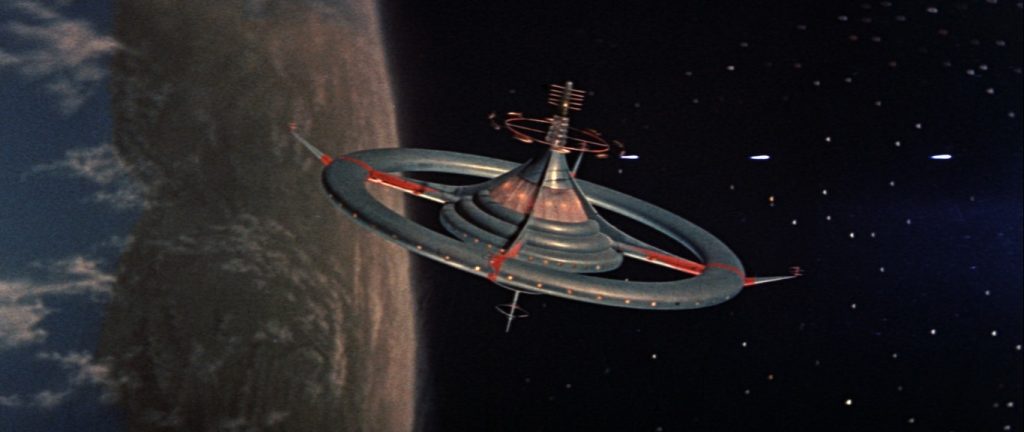
If you visualise the cover illustrations to those lurid 1940s pulp sci-fi magazines and imagine them brought to life, that’s pretty much what Ishirō Honda delivers, in spades, with Battle in Outer Space. The Golden Age visuals are the main attraction, superbly realised by SFX maestro Eiji Tsuburaya using an inventive combinations of miniature, matte paintings, and animated effects. Sure, they’re obviously models and you can even see the wires now and then, but that’s part of what makes the effects so special. You know that everything you’re seeing happened in front of a camera and is brought together through human ingenuity.
These days, CGI is just so easy to accept and dismiss. Back then, a big part of the fun was trying to work out how the trick was done and appreciating the skill involved. Also meeting the illusion half-way with your own imagination was somehow more immersive.
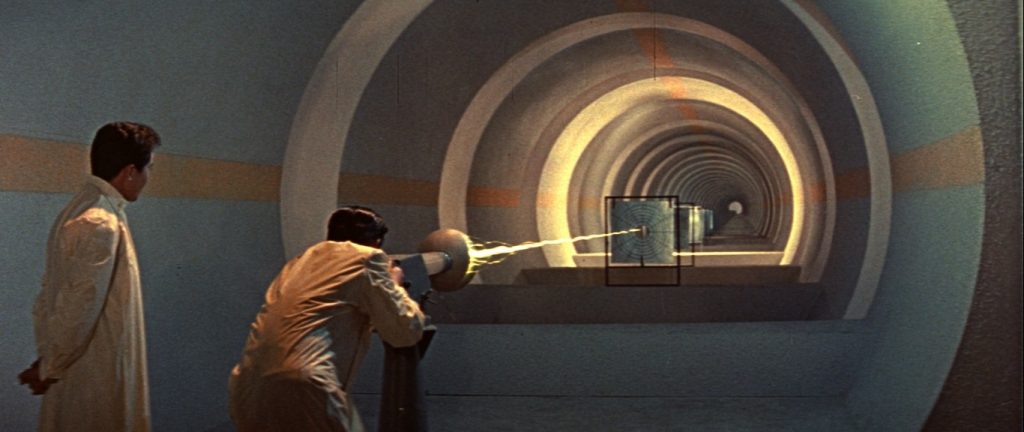
Those who get nostalgic for beautifully lit miniature effects against stunning matte backdrops won’t be disappointed. The whole look riffs on those classics that came before it. The aesthetics borrow heavily from Forbidden Plant (1956) and it lifts the essence of its central narrative from The Day the Earth Stood Still (1951), with a dash of Earth vs the Flying Saucers (1956). As for plot, Battle in Outer Space has more in common with the 1930s Buster Crabbe cinema serials, Flash Gordon or Buck Rogers, and delivers fast-moving fun from the start.
Like most Japanese films of this ilk, it’ll appeal to the child within with its toy-like miniatures and ‘action man’ costume design. It ticks all the boxes: alien menace, flying saucers, a global threat, space suits, space stations, a moon base, and ray-guns. Not to mention the slick rockets—I mean, that’s what a rocket ship is meant to look like!
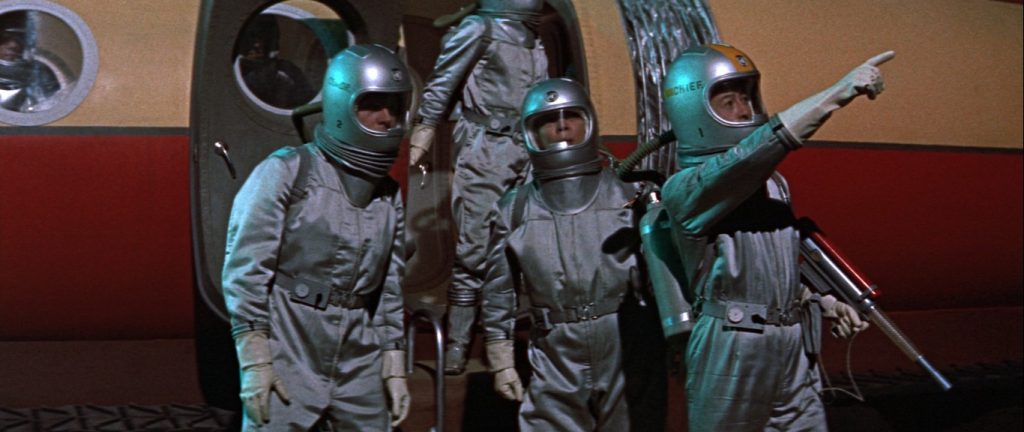
The pre-title sequence already deals out a satisfying dose of destruction as a wheel-like space station encounters a fleet of alien attack craft and is left as drifting debris. However, we soon learn that these aggressors have more than ray guns in their arsenal. Using a freeze-ray to defy the laws of physics, they lift an iron bridge into the sky, replacing it after a derailed train has plummeted into the ravine. They also tour the globe devastating harbours and factories.
For the first half of the movie, we don’t get to see the actual aliens. They’re preceded by a beam of light and a commanding disembodied voice. Somehow, the beam can implant electronic devices into the brains of their victims, who then have no choice but to do the will of the invaders. The film was conceived as a loose sequel to The Mysterians (1957) and features an alien menace of the same name. This must be the inspiration behind ‘The Mysterons’ who had the same modus operandi in Captain Scarlet! Alien abduction and controlling implants became a mainstay of 1950s UFO paranoia, most recently brought back into the mass consciousness by History Channel’s Project Blue Book (2019).
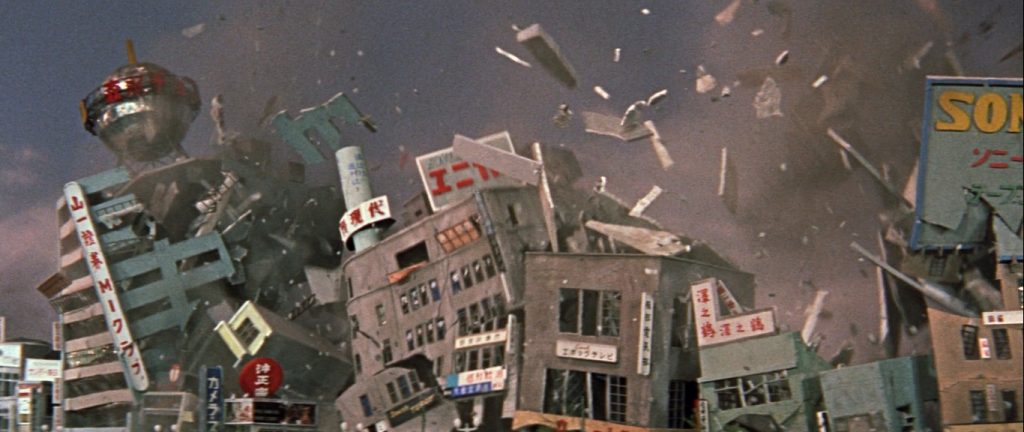
When we finally get to meet the alien menace, they’re a bit of a let-down. They’re totally useless in a scrap! Which is lucky for our heroes. I think that’s the point being made though, that technological superiority counts a lot, but perhaps other things are as important, or more so. Such as the human spirit and strength through cooperation and collaboration. The core theme here is one of hope and optimism. Faith in human nature that, when faced by a common enemy, all the nations of the world would overcome their differences, pool their resources and pull-together.
The united nations of Earth quickly mount a retaliation that involves an international assault team of astronauts flying to the moon to destroy the alien base from where the attacks are being launched. There they have silvery space suits, flying ‘cars’, ray-guns and, unknown to the rest of the crew, a saboteur controlled by an alien implant.
I’m convinced it was the biggest influence on Gerry Anderson and fans of Supermarionation, especially Thunderbirds and Captain Scarlet, will absolutely love Battle in Outer Space. It was one of the earliest all-out special effects extravaganzas and templated many inferior imitators to come. It was never really matched until George Lucas brought us another battle in outer space, Star Wars (1977), which echoes some key sequences…
JAPAN | 1959 | 90 MINUTES • 96 MINUTES (ORIGINAL CUT) | 2.35:1 | COLOUR | JAPANESE • ENGLISH • ITALIAN

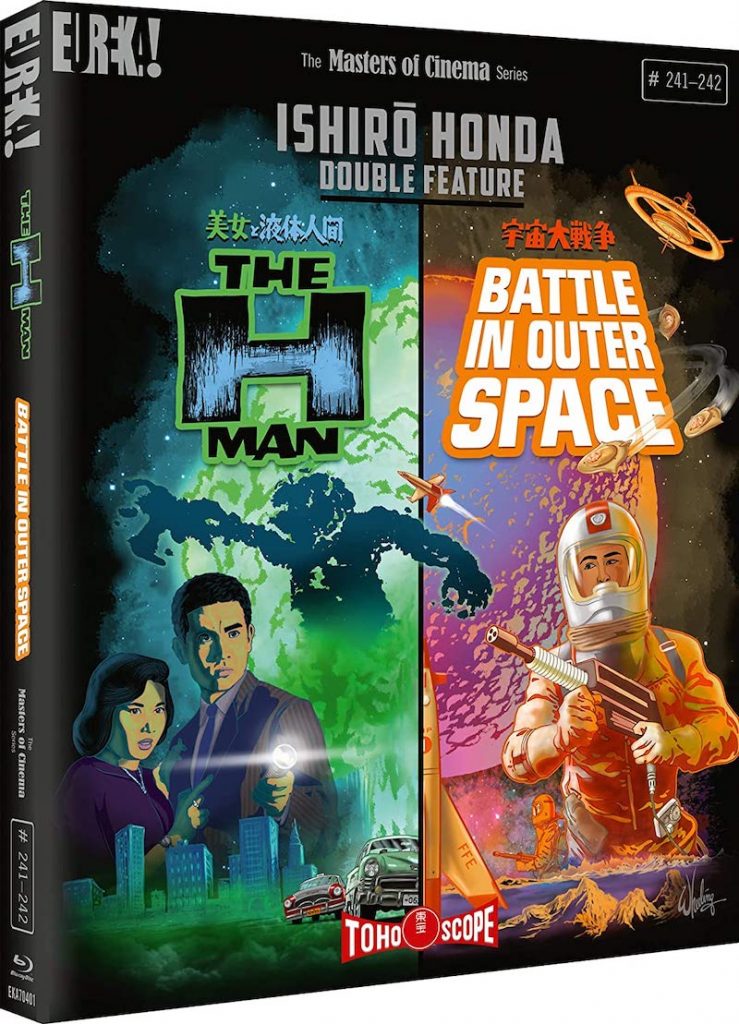
Like Eureka’s recent Mothra Blu-ray, the 1080p HD transfers are great and preserve the grain and colour palette of the originals nicely. Some collectors want better digital scans and clean-up, but I feel the original atmosphere has been enhanced thanks to minimal tampering, although perhaps some of the scratches and glitches could’ve been digitally painted out. But these two films can’t help but look beautiful!

director: Ishirō Honda.
writers: [H-Man] Takeshi Kimura (story by Hideo Kaijo) • [Outer Space] Shinichi Sekizawa (story by Jotaro Okami).
starring: [H-Man] Yumi Shirakawa, Kenji Sahara, Akihiko Hirata, Koreya Senda & Makoto Satō. [Outer Space] Ryō Ikebe, Kyōko Anzai, Minoru Takada, Koreya Senda, Leonard Stanford & Harold Conway.
